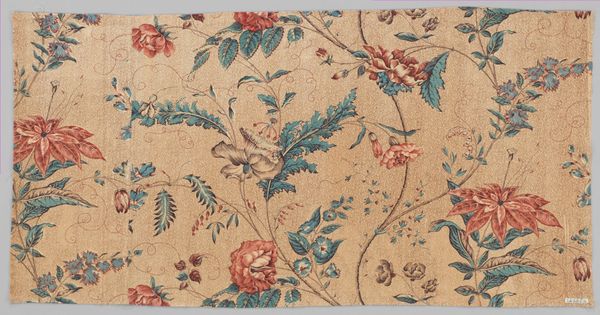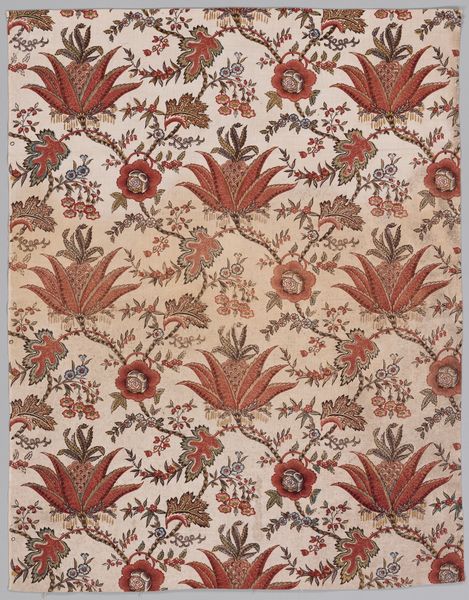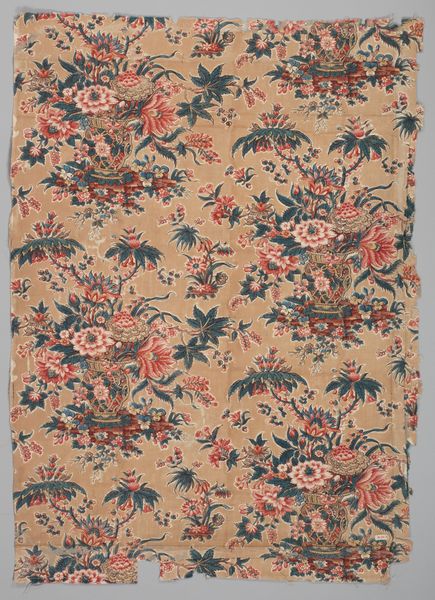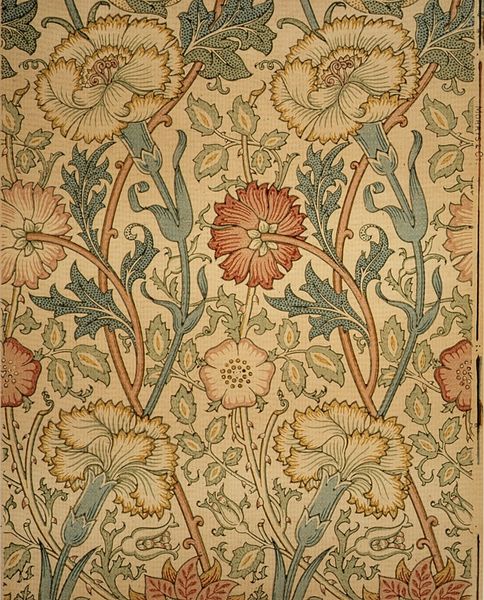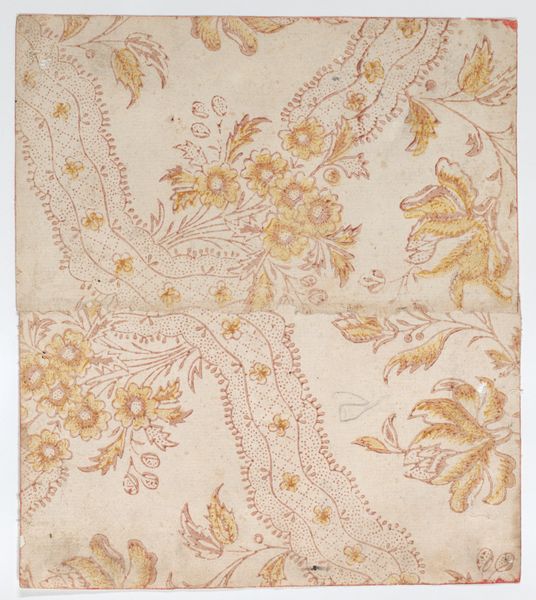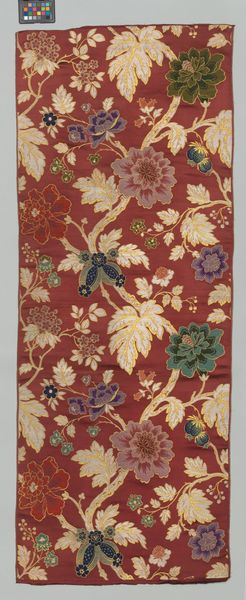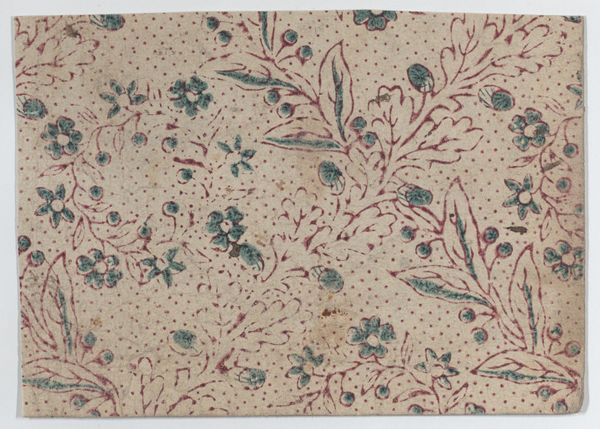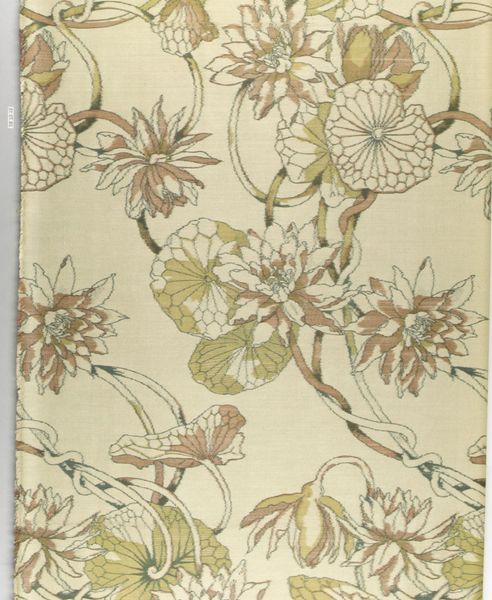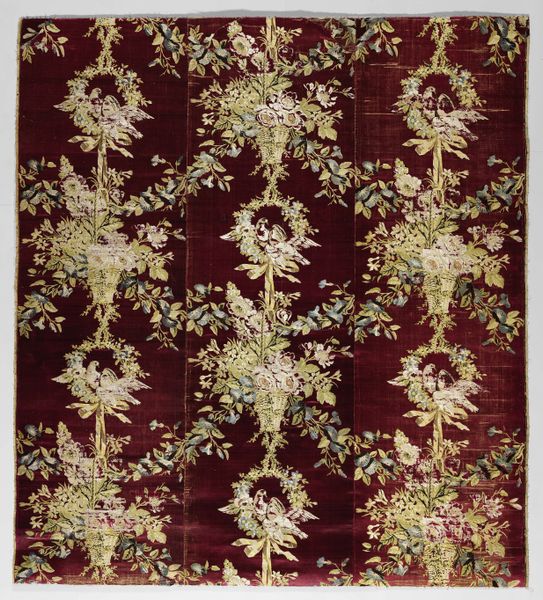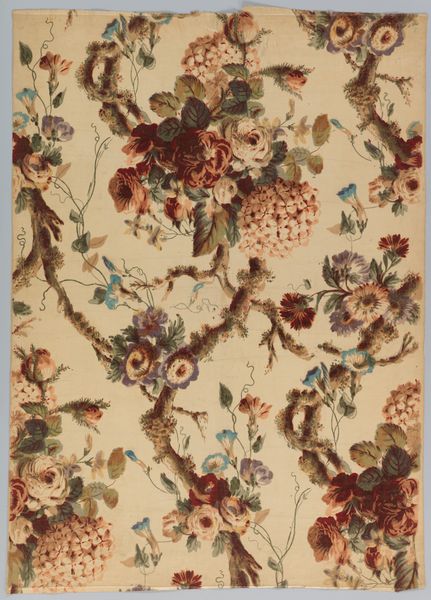
fibre-art, textile
#
fibre-art
#
textile
#
decorative-art
Dimensions: 123 1/2 x 57 1/2 in. (313.69 x 146.05 cm)
Copyright: Public Domain
Curator: The first impression I get from this textile is one of opulent decay, like looking at antique wallpaper in a forgotten room. Editor: This is a shawl created circa 1870. It’s an example of fibre art and textile work housed here at the Minneapolis Institute of Art. Its origins are anonymous. Curator: Shawls like this weren't merely functional; they spoke volumes about the wearer's status. Imagine the hands involved in its creation – from cultivating the fibers to spinning, dyeing, and weaving. Were they free labor? Were they underpaid? How might that labor condition shape the finished product? Editor: The late 19th century saw an influx of these goods, many emulating Eastern designs. Consider the implications: a rise in global trade, yet unequal power dynamics shaped by colonialism and labor exploitation, influencing production chains and consumer culture alike. Curator: Absolutely. Look closely, you'll notice that while seemingly decorative, the materials aren't overly luxurious. The base color is muted and some details appear mass-produced instead of handcrafted. This contrast intrigues me because it suggests a desire for refinement constrained by practical means, echoing how even artistry got shaped and affected by industry during that period. Editor: Its aesthetic links also reach beyond mere ornamentation. The prominent floral and organic motifs are key. There's something profound about how it juxtaposes the natural world, tamed and controlled for human design, symbolizing complex relationships between people and the environment—not always in harmony, or reflecting social ideals concerning nature's roles. Curator: So true; and viewed from this angle, we can see something very subtle emerges within this domestic, ornamental craftwork that goes beyond beauty alone – the convergence between society’s collective mindset about production ethics plus also our cultural appropriation practices at an exact period within history – the echo of forgotten laborers. Editor: These explorations help us confront our assumptions, challenge narratives of beauty, and foster empathy for marginalized workers whose stories deserve amplification. Thank you for walking through this contemplation with me, shedding a brighter light onto this piece and all that it stands for.
Comments
No comments
Be the first to comment and join the conversation on the ultimate creative platform.
